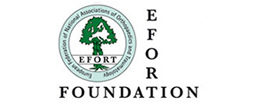When small children unintentionally walk on their toes, the cause may be a gait disorder called idiopathic toe-walking. If the disorder does not cease by itself or through physical therapy, Botox injections could bring improvement, according to a new study presented at the EFORT Congress in Istanbul.
Istanbul, 8 June 2013 – Botox injections in the calves can bring significant improvement to children suffering from idiopathic toe-walking (ITW), according to a new Italian study presented at the 14th Congress of the European Federation of National Associations of Orthopaedics and Traumatology (EFORT) in Istanbul, where 7,500 experts are discussing current developments in their field.
Nine children suffering from idiopathic toe-walking were included in the pilot study. Their mean age was 7.6 years and they had not responded to other therapy attempts. Children with neurological disorders were excluded. The patients received injections of botulinum toxin A in the calf muscles. Ankle-foot orthoses and a program of stretching exercises were used in support of the drug therapy. The results were evaluated one and three months after the injection respectively. After three months, the children’s gait had improved significantly.
Manifold causes
The problem, addressed in an innovative way here, is not a rarity. “A little more than 2% of neurologically otherwise unremarkable five-year-olds walk with a toe gait,” said the study author, Prof Isabella Fusaro (Rizzoli Orthopaedics Institute, Bologna). The toe-walking is not without consequences. Foot dysplasia, back pain, spinal problems and psychological difficulties lurk. A thorough diagnosis should precede therapy. When children increasingly burden their forefeet while walking, or actually tiptoe, the reasons for this can vary. Neurological diseases may be hiding behind the anomaly, or so too could idiopathic factors occurring without apparent cause but in which a significant genetic component is observable. In the context of such latter diagnosis, certain factors should be initially excluded such as severe psychiatric disorders, cerebral diseases, orthopaedic as well as neuromuscular and neurodegenerative diseases. Even in cases of ITW, several types can be diagnostically distinguished. Among many of the affected, the problem takes care of itself within a relatively short time. There are many different approaches and relatively little evidence in regard to therapy. Prof Fusaro: “Treatment depends on age and characteristics of the gait disorder. Attempted methods include physiotherapy, plastering, various orthopaedic shoes and insoles or, in severe cases, surgical extension of the Achilles tendon and, as the case may be, calf muscles.”
Surgical intervention should only be a last resort. A possible alternative is the temporary chemodenervation of the calf muscles through botulinum toxin. This leads to a forced relaxation of the gastrocnemius and the soleus muscles, and thus to an improvement in gait pattern. That’s the theory that has hitherto been confirmed by case reports but hardly by clinical trials. The new data provide additional evidence for treatment with Botulinum toxin.
Prof Fusaro: “For the first time, we now have trial data on the use of Botox in idiopathic toe walking. It was, nevertheless, only a small, non-controlled study. But based on the results, we are now planning a randomized, controlled study in which the control group will be treated with orthosis and exercise alone.”
About EFORT
The European Federation of National Associations of Orthopaedics and Traumatology (EFORT) is the umbrella organisation linking Europe´s national orthopaedic societies. EFORT was founded in 1991 in the Italian Marentino. Today it has 42 national member societies from 43 member countries and six associate scientific members.
EFORT is a non-profit organisation. The participating societies aim at promoting the exchange of scientific knowledge and experience in the prevention and treatment of diseases and injuries of the musculoskeletal system. EFORT organises European congresses, seminars, courses, forums and conferences. It also initiates and supports basic and clinical research.
Source: EFORT Abstract 3943: Clinical and instrumental evaluation of botulinum toxin effects on the “idiopathic toe walking”: a pilot study


